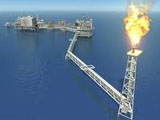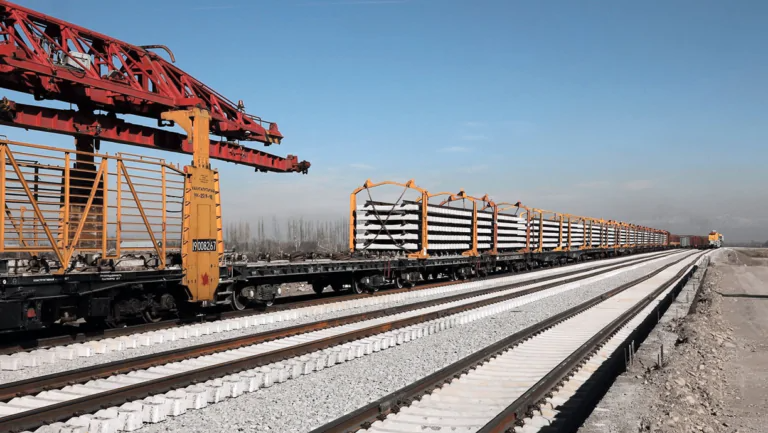|
|
TODAY.AZ / Analytics
Expert: IEA analysts are modest in estimates of Azerbaijan's oil and gas sector
18 December 2010 [13:53] - TODAY.AZ
 On Nov. 9, the International Energy Agency (IEA) presented its latest annual report "World Energy Outlook 2010" which provides forecasts and the inertial scenario of world energy development until 2035. Two chapters of the report are devoted to the Caspian region and include a detailed review of energy development in the region - the internal energy market and the possibility to export oil and gas in the medium and long-term outlook. The balance of supply and demand is evaluated also upon the prospect of production and export of oil and gas. The focus was made on Azerbaijan, Kazakhstan, Turkmenistan and Uzbekistan - the largest energy producers and consumers in the region.
On Nov. 9, the International Energy Agency (IEA) presented its latest annual report "World Energy Outlook 2010" which provides forecasts and the inertial scenario of world energy development until 2035. Two chapters of the report are devoted to the Caspian region and include a detailed review of energy development in the region - the internal energy market and the possibility to export oil and gas in the medium and long-term outlook. The balance of supply and demand is evaluated also upon the prospect of production and export of oil and gas. The focus was made on Azerbaijan, Kazakhstan, Turkmenistan and Uzbekistan - the largest energy producers and consumers in the region.According to the report, the proven oil reserves of the Caspian region total 48 billion barrels, which equals 3.5% of the world oil reserves. Only proven reserves will be sufficient to maintain the present rate of production for about 45 years (worldwide - an average of 46 years). Large oil reserves and resources in the region are concentrated in Kazakhstan, Azerbaijan and Turkmenistan, but also there are significant amounts of renewable oil (though proven reserves in these countries are little). To this day, was produced only 19 percent of the total volume of renewable crude oil in the region, while in the world this figure rises to 33 percent.
According to IEA projections, the productivity of many fields that are developed now will decline, and oil producers will face a difficult and costly problem to find new fields. The discovery of new fields in Azerbaijan will lead to small increase in oil production - from 1.1 million bpd in 2008 to 1.3 million bpd in 2020 - mostly from the Chirag oil project, where $6 billion have been invested, which was approved in March 2010. However, the forecasts for long-term outlook show that the total oil production in the country will gradually decrease and will reach 0.9 million bpd in 2035. Currently the second wave of investment in the offshore sector is recorded, especially by the French Total Company, which again began research work on the Absheron field, the German RWE - on Nakhchivan and BP - Shafag and Asiman.
The important role in determining the trajectory of development of oil production on the Azeri-Chirag-Guneshli (ACG) will be played by the decision to extend PSA, because the current PSA period will expire in 2024 and this weakens the incentive to the existing consortium to support other projects after the Chirag oil project.
As for gas, the situation is different from oil. Proven reserves of conventional type of gas in the region total 13 trillion cubic meters, making up 7% of total world reserves. Much greater volume of renewable energy sources are natural gas, which account for 26 trillion cubic meters. In general, the reserves in the Caspian region will be enough for 70 years with the current rate of production (the world's reserves up to 60 years). Total gas production in the region will double from 159 billion cubic meters in 2009 to 315 billion cubic meters in 2035. According to IEA analysts, the country's proven reserves make up 1.4 trillion cubic meters, the bulk of which is contained in the bowels of the Shah Deniz field. Gas production in the country by 2015 will increase and reach 20 billion cubic meters since the second phase of the development of the Shah Deniz field will come into force in 2017.
Development of the second phase of the field will increase the gas production in the country to 36 billion cubic meters by 2020, of which 23 billion cubic meters free volume will be destined for export. After 2020 the production of the remaining gas resources in the country will be made on increasing the line and by 2025 will reach 43 billion cubic meters, and by 2035 - 50 billion cubic meters.
In our view, the figures quoted by IEA analysts are too modest and should be worked further. According to official data of SOCAR, upon the most accurate forecasts, gas production in the country in 2010 will make up 28 billion cubic meters. After the development of the second phase of Shah Deniz field, in 2017 the gas production will make up 55 billion cubic meters per year. Therefore, 20 billion cubic meters by 2015 and 36 billion cubic meters by 2020 are the figures that seem unrealistic and underestimated.
We understand that the figures cited in the Outlook focused only on proven reserves of the country in the terminology and methodology adopted by the stock markets. So, for example, in this methodology the reserves of new Umid field will be equated to zero, because the tests have not yet been analyzed. Yet, if we build scenario (you can call them optimistic scenario), Azerbaijan would like to see a scenario where gas reserves could allow the export level of 30-40 billion cubic meters by 2040.
With regards to the future markets for the export of Azerbaijani gas by 2035, the IEA analysts set the only possible market - European, through South Corridor via Georgia and Turkey, including Nabucco, ITGI and TAP (except current Russian and Iranian markets). Moreover, the Outlook says that if the Shah Deniz field remains the only source of gas for the implementation of the Southern Corridor by 2020, it would harm the implementation of Nabucco, since the Shah Deniz field will have to assume the resulting costs.
Since SOCAR plans to increase gas exports to 40 billion cubic meters, for example by 2020, there will not be shortage of gas in the country for export. However, what volume of this gas will reach the European market is still an open question, because so far there is no binding agreement on transportation of Azerbaijani gas to European countries. For this reason, Azerbaijan is considering all possible markets for natural gas export, including the Middle East market.
No attention has been paid to the possible export of non-traditional type of gas, exactly the liquefied natural gas (LNG), by Azerbaijan to the same European market in the medium and long-term outlook. For the country, the AGRI project is not less important, because from the perspective of Azerbaijan, AGRI is an excellent opportunity to have an access to the Balkan downstream, exactly to countries such as Hungary, Bulgaria, Macedonia, Slovakia, Serbia, Croatia, Albania and Kosovo. Central European countries - Austria, Czech Republic and others - can join the project after a single gas network system of the EU is constructed.
By Gulmira Rzayeva
fellow at the Center for Strategic Studies
under the President of the Republic of Azerbaijan
/Trend/
URL: http://www.today.az/news/analytics/78394.html
 Print version
Print version
Views: 9406
Connect with us. Get latest news and updates.
See Also
- 07 December 2025 [15:27]
Kocharyan’s reckless rhetoric exposes real enemy of Armenia’s future - 04 December 2025 [20:43]
Yerevan’s narrative on detainees masks domestic politics [OPINION] - 04 December 2025 [08:30]
Azerbaijan unveils AI platform in bid to become Caucasus innovation hub - 03 December 2025 [19:50]
Baku’s strategic patience ends Minsk Group era, rewrites regional power dynamics - 01 December 2025 [13:58]
Baku positions itself as regional digital hub through WTDC-25 - 29 November 2025 [08:30]
Banking sector strengthens as capital, credit and digitalization advance - 28 November 2025 [08:30]
President Aliyev places industry and innovation at centre of economic reform - 26 November 2025 [08:30]
Caspian energy faces turning point as Azerbaijan sets course beyond oil dependence - 25 November 2025 [08:30]
World Bank study highlights path for Azerbaijan’s shift to non-oil economy - 23 November 2025 [16:19]
Armenia faces its moment of truth on constitutional reform
Most Popular
 European Union is once again promising Armenia what it cannot fulfill
European Union is once again promising Armenia what it cannot fulfill
 Pashinyan showed the wrong side of the Karabakh negotiations: there is no sensation for us, it is a shock for the Armenians
Pashinyan showed the wrong side of the Karabakh negotiations: there is no sensation for us, it is a shock for the Armenians
 Baku hosts Azerbaijan–Georgia Media Forum on public trust and information security
Baku hosts Azerbaijan–Georgia Media Forum on public trust and information security
 China launches longest nonstop flight
China launches longest nonstop flight
 OTS Chief stresses safe working conditions and cooperation for sustainable growth
OTS Chief stresses safe working conditions and cooperation for sustainable growth
 Southern Gas Corridor to channel most earnings to SOCAR and Azerbaijani state - Fitch says
Southern Gas Corridor to channel most earnings to SOCAR and Azerbaijani state - Fitch says
 Construction progresses on Nakhchivan railway segment bordering Armenia
Construction progresses on Nakhchivan railway segment bordering Armenia
